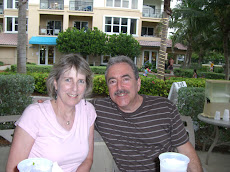
His Holiness the Dalai Lama spoke at Emory today, and I was pleased to be present. You can learn more about him and his teachings, here is an excerpt from his web site:
Question: About you being the incarnation of the bodhisattva of infinite compassion, Avalokiteshvara. How do you personally feel about this? Is it something you have an unequivocal view of one way or another?
Answer: It is difficult for me to say definitely. Unless I am engaged in a meditative effort, such as following my life back, breath by breath, I couldn’t say exactly. We believe that there are four types of rebirth. One is the common type wherein, a being is helpless to determine his or her rebirth, but only reincarnates in dependence on the nature of past actions. The opposite is that of an entirely enlightened Buddha, who simply manifests a physical form to help others. In this case, it is clear that the person is Buddha. A third is one who, due to past spiritual attainment, can choose, or at least influence, the place and situation of rebirth. The fourth is called a blessed manifestation. In this the person is blessed beyond his normal capacity to perform helpful functions, such as teaching religion. For this last type of birth, the person’s wishes in previous lives to help others must have been very strong. They obtain such empowerment. Though some seem more likely than others, I cannot definitely say which I am.
Question: About you being the incarnation of the bodhisattva of infinite compassion, Avalokiteshvara. How do you personally feel about this? Is it something you have an unequivocal view of one way or another?
Answer: It is difficult for me to say definitely. Unless I am engaged in a meditative effort, such as following my life back, breath by breath, I couldn’t say exactly. We believe that there are four types of rebirth. One is the common type wherein, a being is helpless to determine his or her rebirth, but only reincarnates in dependence on the nature of past actions. The opposite is that of an entirely enlightened Buddha, who simply manifests a physical form to help others. In this case, it is clear that the person is Buddha. A third is one who, due to past spiritual attainment, can choose, or at least influence, the place and situation of rebirth. The fourth is called a blessed manifestation. In this the person is blessed beyond his normal capacity to perform helpful functions, such as teaching religion. For this last type of birth, the person’s wishes in previous lives to help others must have been very strong. They obtain such empowerment. Though some seem more likely than others, I cannot definitely say which I am.
 I was looking through one of my first journals today and found where I wrote an excerpt from Demian, by Hermann Hesse. ... "I nodded but was unable to make any comment. He began to bore me and I was startled that his evident need and despair made no deeper impression on me. My only feeling was: I can't help you." Hesse wrote this book in 1919 [under pen name Emil Sinclair] and I read it in the late 1960's... of course I read Siddhartha, Steppenwolf, Narcissus and Goldmund and others. Hesse was born in 1877 and published many works in the first half of the 20th century.
I was looking through one of my first journals today and found where I wrote an excerpt from Demian, by Hermann Hesse. ... "I nodded but was unable to make any comment. He began to bore me and I was startled that his evident need and despair made no deeper impression on me. My only feeling was: I can't help you." Hesse wrote this book in 1919 [under pen name Emil Sinclair] and I read it in the late 1960's... of course I read Siddhartha, Steppenwolf, Narcissus and Goldmund and others. Hesse was born in 1877 and published many works in the first half of the 20th century.

